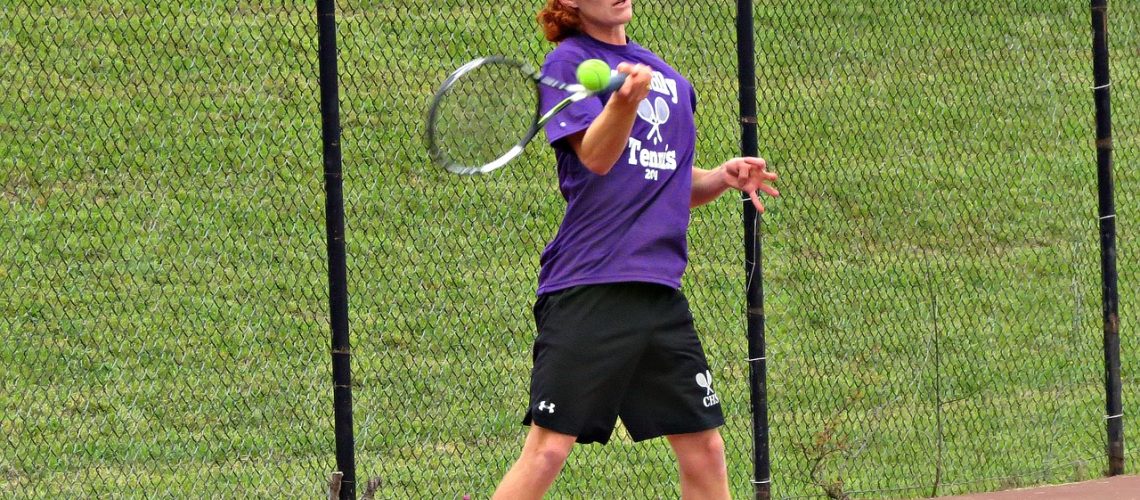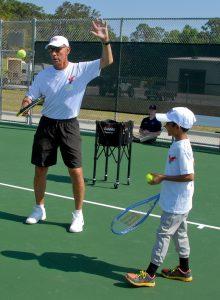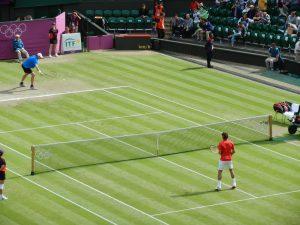We may earn money or products from the companies mentioned in this post.
Brief Overview of Tennis as a Sport

Tennis, a captivating and dynamic sport, has a rich history that traces back centuries Its origins can be found in various ancient ball games played across different cultures However, modern tennis as we know it today began to take shape in the 19th century
During this time, Walter Clopton Wingfield is credited with creating the first standardized set of rules for tennis These rules formed the foundation for the sport’s development and eventual global popularity
Tennis quickly gained traction around the world, captivating both players and spectators alike It became an Olympic sport in 1896 and has since grown into one of the most widely recognized and celebrated sports globally
Importance of Understanding Match Duration

For Players: Preparation and Endurance
For tennis players, understanding match duration is crucial for effective preparation and building endurance Matches can vary significantly in length depending on numerous factors such as playing style, court surface, weather conditions, and opponent skill level
Knowing how long a match could potentially last allows players to tailor their training routines accordingly They can focus on improving their stamina and endurance through specific drills and physical conditioning exercises to ensure they perform at their best throughout the entire match
For Spectators: Planning and Scheduling
Spectators who plan to attend or watch tennis matches also benefit from understanding match duration Tennis tournaments often have multiple matches scheduled throughout a day or week-long event
By knowing how long each match typically lasts, spectators can plan their schedules more effectively They can determine which matches they want to prioritize based on their availability or preference for shorter or longer games This knowledge ensures they don’t miss out on witnessing thrilling moments or favorite players’ performances
Whether you’re a player or a spectator, understanding the duration of tennis matches is essential for optimal preparation, endurance, and planning So next time you gear up to play or watch a tennis match, keep in mind the varying durations that make this sport so captivating!
Factors Affecting the Length of a Tennis Match

When it comes to tennis matches, several factors come into play that can significantly impact the duration of the game From the format of the match to the surface type and player styles, these variables contribute to the overall length and excitement of a match
Format of the Match
The format of a tennis match plays a crucial role in determining its duration Matches can be played as best-of-three sets or best-of-five sets, depending on the tournament and category
In prestigious Grand Slam matches, such as men’s singles at tournaments like Wimbledon or the US Open, players compete in best-of-five set matches This longer format allows for more drama, endurance, and comeback opportunities
In other tournaments, including women’s singles competitions and various doubles events like mixed doubles or men’s doubles, matches are often played as best-of-three sets This shorter format adds an element of urgency to each point and typically results in quicker matches compared to their five-set counterparts
Surface Type
The type of playing surface also influences how long a tennis match will last Different surfaces offer unique characteristics that affect gameplay and rally durations
- Clay Courts: Clay courts are known for their slower pace and higher bounce, making rallies longer and more grueling for players The softness of clay allows balls to grip onto it before bouncing off, giving players more time to react As a result, clay court matches tend to be longer due to extended baseline exchanges
- Grass Courts: Grass courts provide a faster playing surface with lower bounces, favoring aggressive shot-making rather than lengthy rallies Points on grass courts are often won quickly due to the surface’s low friction, resulting in shorter match durations compared to clay or hard courts
- Hard Courts: Hard courts offer a medium-paced playing surface that falls between the extremes of clay and grass The ball bounces evenly and predictably on hard courts, allowing players to execute their shots effectively Match durations on hard courts can vary depending on player styles and strategies employed
Player Styles and Strategies
Player styles and strategies play a significant role in determining the length of a tennis match There are two primary styles in tennis – aggressive baseliners and serve-and-volley players
Aggressive baseliners prefer to stay at the back of the court, relying on powerful groundstrokes to dictate play Their style often leads to longer rallies as they engage in baseline battles with their opponents
Serve-and-volley players, on the other hand, employ a more attacking approach by rushing towards the net after serving Their strategy aims to finish points quickly through volleys or smashes, resulting in shorter rallies overall
The choice of player style can also be influenced by the playing surface For example, aggressive baseliners may find clay courts advantageous due to its slower pace, allowing them more time to set up their shots In contrast, serve-and-volley players might thrive on faster surfaces like grass courts where their aggressive net game is rewarded
In conclusion, several factors come together to influence the length of a tennis match The format of the match (best-of-three sets vs best-of-five sets), surface type (clay, grass, or hard court), and player styles/strategies all contribute to shaping an exciting and unpredictable contest that keeps fans on edge throughout each rally
Typical Duration of Tennis Matches by Level and Format

Amateur/Club Level Matches
At the amateur or club level, tennis matches are usually played in a best-of-three set format This means that the first player to win two sets wins the match The duration of these matches can vary greatly due to the variability in skill levels among players
In some cases, a match between two evenly matched players may be relatively short, with each set lasting around 30 minutes However, if there is a significant skill gap between the players, the match can stretch on for much longer
Tiebreakers are often used to determine the winner of a set when the score reaches a certain threshold These tiebreakers can potentially extend the length of a match as players battle it out to gain an advantage and secure victory
Professional-Level Matches
At the professional level, tennis matches have specific formats for different categories In men’s singles matches, for example, players compete in a best-of-five-set format Women’s singles matches, on the other hand, follow a best-of-three-set format
The average duration of professional tennis matches can vary depending on several factors such as playing style, court surface, and player fitness Men’s singles matches tend to be longer compared to women’s singles matches due to the additional sets played
Doubles’ matches also have their own dynamics when it comes to duration Generally speaking, doubles’ matches are shorter than singles’ matches since there are four players on court instead of just two With more players covering ground and sharing responsibilities during points, rallies tend to be shorter and thus contribute to quicker overall match durations
Longest Recorded Professional Tennis Matches
In addition to the typical match durations, there have been some exceptional marathon matches in professional tennis history Grand Slam tournaments, known for their grueling schedules and high stakes, have witnessed some of the longest matches ever recorded
These epic battles can last for several hours or even span over multiple days Players push themselves to their physical limits and display incredible mental fortitude as they battle it out on court
Aside from Grand Slam events, there have also been record-breaking instances in other tournaments where players engaged in extraordinary contests that captivated tennis fans worldwide
Overall, the duration of a tennis match is influenced by various factors such as level of play, format, skill levels of players involved, and the intensity with which they compete Whether it’s a quick-paced amateur match or an unforgettable professional showdown, tennis provides fans with excitement and entertainment that transcends time
Managing expectations and preparing for long tennis matches

When it comes to long tennis matches, players need to be well-prepared both physically and mentally Endurance training plays a crucial role in building the stamina required to sustain intense rallies over extended periods This includes cardiovascular exercises, strength training, and agility drills By investing time and effort into their physical conditioning, players can ensure they have the necessary staying power to go the distance
In addition to physical conditioning, mental preparation is equally important for players facing the prospect of extended matches The ability to maintain focus, stay composed under pressure, and overcome fatigue becomes paramount during these challenging encounters Techniques such as visualization, positive self-talk, and mindfulness can help players develop mental resilience and perform at their best when the going gets tough
Proper nutrition and hydration strategies are also vital for players during long tennis matches Consuming a balanced diet that includes carbohydrates for energy, proteins for muscle recovery, and healthy fats for sustained fuel is essential in maximizing performance Hydration should not be overlooked either – ensuring adequate intake of fluids before, during, and after matches helps prevent dehydration which can negatively impact performance
For spectators

Spectators attending long tennis matches should be aware of potential match length based on various factors discussed earlier Factors such as player rankings, playing styles, court surface speed, weather conditions can all contribute to longer or shorter match durations By understanding these factors, spectators can better manage their expectations regarding match duration
Planning for breaks and refreshments is another important consideration for spectators at long tennis matches It’s wise to bring along snacks or drinks to keep energized throughout the match since some longer matches may not have regular intervals or may have limited food options available on-site Packing some light snacks like fruits or energy bars along with plenty of water can help ensure spectators stay nourished and hydrated during the course of the match
Attending live tennis events requires some additional considerations Spectators should check the weather forecast beforehand and dress accordingly, taking into account factors like temperature, rain, or sun exposure It’s also important to consider seating arrangements – choosing a seat with a good view of the court and comfortable amenities can greatly enhance the overall experience Being prepared and well-informed allows spectators to fully enjoy long tennis matches while minimizing any potential inconveniences
Useful Links

How long is one set of tennis?
A Tennis Marathon: How Long is a Tennis Match?
How Long Does A Tennis Match Last?
How long is a tennis match? – Tienda De TENIS
How Long Do Tennis Matches Last? [2023] –
How long do Tennis Matches Last Typically : You Should Must …
How Long is A Tennis Match?
Do tennis matches take too long?
Match length – Heavy Topspin
HOW LONG Does A High School Tennis Match Last?
Tennis explained: Learn the game
How Long do Tennis Matches Last? Interesting Facts
Tennis Scoring: Points, Sets & Games | Tennis Rules
Tennis scoring system
How Long Does A Tennis Match Last?
Is There A Time Limit In Tennis? – The Racket Life
How To Play Tennis | Rules of Sport
Tennis scoring, explained: A guide to understanding the …
How to Keep Score in Tennis
OPINION: Are night matches damaging the game?






